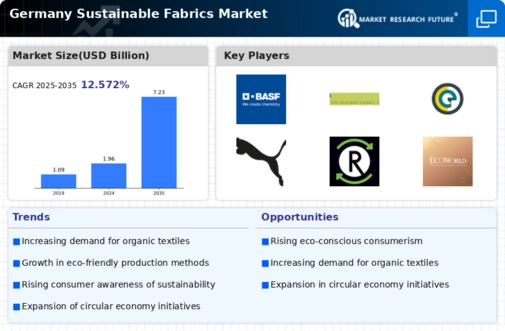In Germany, the Sustainable Fabrics Market has been undergoing substantial growth, primarily due to the growing consumer awareness of environmental issues and the demand for eco-friendly products. The objective of the German government is to reduce textile pollution and promote recycling by actively supporting sustainable practices through a variety of initiatives. This has incited a transition to more sustainable materials, including organic cotton, hemp, and recycled polyester, which are consistent with the overarching sustainability objectives of Europe.
In addition, the supply chain is being transformed by the increasing demand for ethically produced garments, which is motivating manufacturers to implement traceability and transparency measures. New opportunities for exploration include the development of innovative production processes that minimize environmental impact through collaborations between textile manufacturers and technology firms. Companies are increasingly motivated to develop fabrics that are not only durable but also biodegradable or recyclable as the emphasis on circular economy practices is rising. Furthermore, consumers are increasingly adopting certifications such as GOTS (Global Organic Textile Standard) and OEKO-TEX, which strengthens the market's dedication to sustainable practices.
A transition toward local sourcing and production has been observed in recent market trends, which has the potential to reduce carbon footprints and support regional economies.
There is also a growing interest in enhancing the functional properties of sustainable fabrics, such as moisture-wicking, durability, and comfort, which appeals to both eco-conscious consumers and the activewear market. This blend of practicality and sustainability is becoming a hallmark of the German textile industry, with more brands adopting eco-friendly practices across their collections. Overall, the Sustainable Fabrics Market in Germany showcases a commitment to innovation, transparency, and sustainability, aligning with the nation’s broader environmental objectives.






















